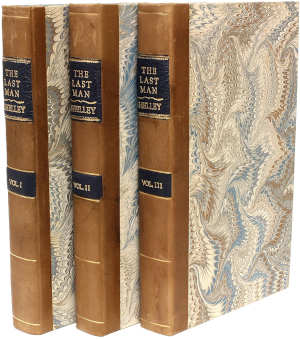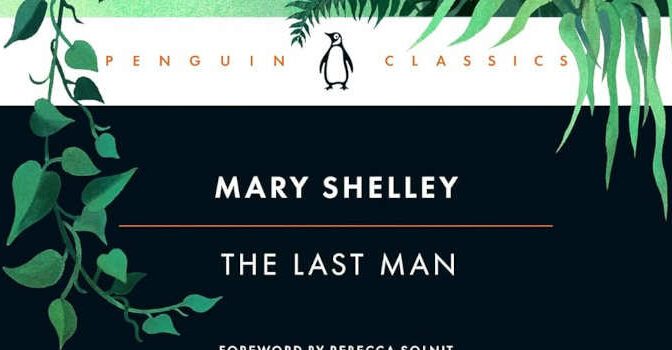Mary Shelley The Last Man recensie, review en informatie over de inhoud van de dystopische sciencefictionroman uit 1826 van de Engelse schrijfster. Op deze pagina lees je uitgebreide informatie over de roman The Last Man van de uit Engeland afkomstige schrijfster Mary Shelley die verscheen in februari in 1826. Een Nederlandse vertaling van de roman is op dit moment niet verkrijgbaar.
Mary Shelley The Last Man recensie, review en informatie
- “The Last Man is Mary Shelley’s most important novel after Frankenstein. With intriguing portraits of Percy Bysshe Shelley and Lord Byron, the novel offers a vision of the future that expresses a reaction against romanticism, and demonstrates the failure of the imagination and of art to redeem the doomed characters.” (Warm Days Will Never Cease)
The Last Man
- Auteur: Mary Shelley (Engeland)
- Soort boek: dystopische roman, sciencefiction
- Eerste editie: februari 1826
- Taal: Engels
- Uitgever: Penguin Classics
- Omvang: 592 pagina’s
- Uitgave: paperback / ebook
- Waardering redactie: ∗∗∗∗∗ (uitstekend)
- Boek bestellen bij: Amazon / Bol
Flaptekst van de roman van Mary Shelley uit 1826
Mary Shelley’s landmark novel that invented the human extinction genre and initiated climate fiction.
Written while Mary Shelley was in a self-imposed lockdown after the loss of her husband and children, and in the wake of intersecting crises including the climate-changing Mount Tambora eruption and a raging cholera outbreak, The Last Man (1826) is an early work of climate fiction and a prophetic depiction of environmental change.
Set in the late twenty-first century, a deadly pandemic leaves a lone survivor, and follows his journey through a post-apocalyptic world, devoid of humanity and reclaimed by nature. Rather than give in to despair, Shelley imagines a new world where freshly-formed communities and alternative ways of being stand in for self-important politicians serving corrupt institutions, and where nature reigns mightily over humanity.
Brimming with political intrigue, The Last Man broaches partisan dysfunction, imperial warfare, refugee crises, and economic collapse—and brings the legacy of her radically progressive parents, William Godwin and Mary Wollstonecraft, to bear on present-day questions about making a better world less centred around “man.”
Mary Shelley (30 August 1797, London – 1 February 1851, London) is the daughter of pioneering thinkers Mary Wollstonecraft and  William Godwin, eloped with the poet Percy Shelley at the age of sixteen. Three years later, during a wet summer on Lake Geneva, Shelley famously wrote her masterpiece, Frankenstein. The years of her marriage were blighted by the deaths of three of her four children, and further tragedy followed in 1822, when Percy Shelley drowned in Italy. Following his death, Mary Shelley returned to England and continued to travel and write until her own death at the age of fifty-three.
William Godwin, eloped with the poet Percy Shelley at the age of sixteen. Three years later, during a wet summer on Lake Geneva, Shelley famously wrote her masterpiece, Frankenstein. The years of her marriage were blighted by the deaths of three of her four children, and further tragedy followed in 1822, when Percy Shelley drowned in Italy. Following his death, Mary Shelley returned to England and continued to travel and write until her own death at the age of fifty-three.

